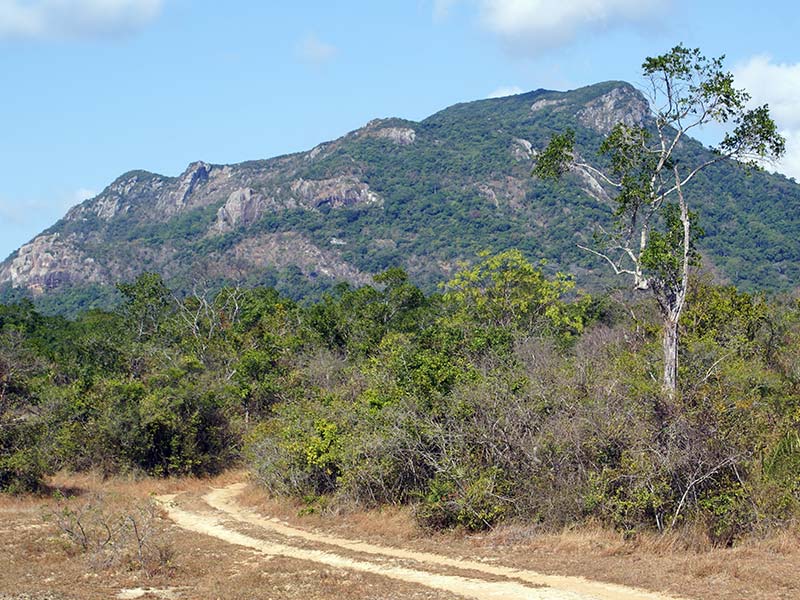Lying within the Cultural Triangle, just off Dambulla, Ritigala’s strict nature reserve is a heavily wooded 2,513-foot mountain on which once existed a monastic cave complex home to an order of ascetic monks. The remote and secluded site is believed to have been used as a retreat by monks from as early as the first century BC, but the excavated ruins visible today date back to the 9th Century AD, which King Sena had built for them seeing the extreme form of austerity they practiced. With no traces of living quarters being uncovered it is believed they resided in caves, of which close to seventy can be found scattered across its slopes.
The ruins begin with the Banda Pokuna, believed to be a ritual bathing pond from which steep steps lead to a stone paved walkway, which connected the buildings of the monastic complex. From here the walkway leads to several sunken courtyards which feature east-west oriented platforms mounted on stone pillars. The purpose of these are not clear but they are believed to have been used for meditation. Further on a stone bridge over a stream, leads to what had been a hospital providing magnificent views of the forest below.
Ritigala strict nature reserve also features in the legend of Ramayana and is said to be the point from where Lord Hanuman made a giant leap to the south of India after finding Sita. It also provides an explanation of the rare varieties of medicinal herbs found here, in that Hanuman accidentally dropped a part of the Himalayas here on his return from a quest in search of medicinal herbs to treat the injured Prince Lakshmana.
Written by Jonathan Roelofsz for Travel Lanka Compass



0 Comment